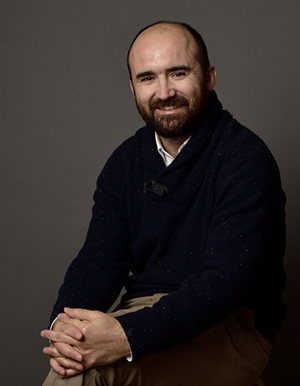Federico Herrera Lab

 |
The overall aim of my laboratory is to lay the groundwork for the application of regenerative medicine in central nervous system (CNS) disorders involving neuronal loss, such as neurodegenerative disorders, spinal cord injury or stroke. |
|
Federico Herrera Phone (+351) 214469300 | Extension 1300 |
|
 |
Research Interests
CNS pathologies are a major cause of death and disability worldwide, and have no cure. Our brain and spinal cord have potential to produce new neurons from adult stem cells, and thus regenerate after injury. In practice, however, it favors the generation of the other major brain cell type known as astroglia. Astroglia react and proliferate in response to most CNS insults. If the integrity of the blood-brain barrier is compromised, reactive astroglia forms the glial scar, which closes the wound and limits the extent of the damage. However, damage is contained at the expense of tissue regeneration. Reactive astroglia and the glial scar are strong physical and chemical barriers that inhibit neurogenesis and axonal outgrowth and promote further astrogliogenesis and neuroinflammation. For these reasons, therapeutic strategies for CNS repair should include the inhibition of astrogliogenesis and the glial scar.
Our goal is to unravel the mechanisms governing astrogliogenesis in health and disease, and develop new technologies to target and control subpopulations of astrocytes or neurons in vitro and in vivo.
Cellular neurobiology
We use cellular and molecular models to elucidate the basic mechanisms governing the birth, behavior and fate of CNS cells (both neuronal and glial), with especial focus on astroglia. The signaling pathways leading to the production of new astroglia in normal and pathological conditions involve three major specific events: 1) protein phosphorylation; 2) protein-protein interactions; and 3) astroglial gene expression. We are developing new systems to visualize and study key protein-protein interactions in the astrogliogenic pathway in living cells. We are carrying out pharmacological and genetic screens in these cellular models, in order to identify kinases and phosphatases involved in the production of astroglia. Our understanding of these processes could provide new clues for the cure of CNS pathologies.
Another field in which we are interested in is the development of new optogenetic tools to control the behavior and fate of subpopulations of neural cells. Optogenetic tools allow us to target and control populations of neurons or glia expressing a single gene that is specific of the target cell population. However, such specificity is rare. A single gene is always expressed by several CNS populations and, most often, a particular subpopulation is normally characterized by two or more genes. We are trying to develop optogenetic systems that allow us to target cell subpopulations expressing at least two genes, improving the cellular specificity and resolution of the current optogenetic toolbox.
Group Members
-
- Federico Herrera, Investigador FCT
- Joana Branco dos Santos, PhD student
- Ricardo Vilela, PhD student
- Fernanda Murtinheira, PhD student
-
Catarina Almeida, Master student
-
Joana Silvestre Ferreira, Master student
-
Beatriz Cardoso, Master Student
Selected Publications
-
Herrera F, Chen Q, Fischer WH, Maher P, Schubert DR (2009). Synaptojanin-1 plays a key role in astrogliogenesis: possible relevance for Down's syndrome. Cell Death Differ. 16(6):910-20.
-
Herrera F, Chen Q, Schubert D (2010). Synergistic effect of retinoic acid and cytokines on the regulation of glial fibrillary acidic protein expression. J Biol Chem. 285(50):38915-22.
-
Letra-Vilela R, Sánchez-Sánchez AM, Rocha AM, Martin V, Branco-Santos J, Puente-Moncada N, Santa-Marta M, Outeiro TF, Antolín I, Rodriguez C and HERRERA F (2016). Distinct roles of N-acetyl and 5-methoxy groups in the antiproliferative and neuroprotective effects of melatonin. Mol Cell Endocrinol. 2016 Oct 15;434:238-49. doi: 10.1016/j.mce.2016.07.012.
Laboratory's Website
For further information please visit the laboratory's website (under construction)
Dinâmica e Estrutura Celular (PT)









